Entry Database : PDB / ID : 6ghkTitle Human PARP1 (ARTD1) - Catalytic domain in complex with inhibitor ME0527 Poly [ADP-ribose] polymerase 1 Keywords / / / Function / homology Function Domain/homology Component
/ / / / / / / / / / / / / / / / / / / / / / / / / / / / / / / / / / / / / / / / / / / / / / / / / / / / / / / / / / / / / / / / / / / / / / / / / / / / / / / / / / / / / / / / / / / / / / / / / / / / / / / / / / / / / / / / / / / / / / / / / / / / / / / / / / / / / / / / / / / / / / / / / / / / / / / / Biological species Homo sapiens (human)Method / / / Resolution : 2.28 Å Authors Karlberg, T. / Thorsell, A.G. / Lindgren, A.E.G. / Moche, M. / Brock, J. / Ekblad, T. / Spjut, S. / Elofsson, M. / Schuler, H. Journal : To Be Published Title : Human PARP1 (ARTD1) - Catalytic domain in complex with inhibitor ME0527Authors : Karlberg, T. / Thorsell, A.G. / Lindgren, A.E.G. / Ekblad, T. / Spjut, S. / Elofsson, M. / Schuler, H. History Deposition May 8, 2018 Deposition site / Processing site Revision 1.0 May 22, 2019 Provider / Type Revision 1.1 Jan 17, 2024 Group / Database references / Refinement descriptionCategory chem_comp_atom / chem_comp_bond ... chem_comp_atom / chem_comp_bond / database_2 / pdbx_initial_refinement_model Item / _database_2.pdbx_database_accession
Show all Show less
 Yorodumi
Yorodumi Open data
Open data Basic information
Basic information Components
Components Keywords
Keywords Function and homology information
Function and homology information Homo sapiens (human)
Homo sapiens (human) X-RAY DIFFRACTION /
X-RAY DIFFRACTION /  SYNCHROTRON /
SYNCHROTRON /  MOLECULAR REPLACEMENT / Resolution: 2.28 Å
MOLECULAR REPLACEMENT / Resolution: 2.28 Å  Authors
Authors Citation
Citation Journal: To Be Published
Journal: To Be Published Structure visualization
Structure visualization Molmil
Molmil Jmol/JSmol
Jmol/JSmol Downloads & links
Downloads & links Download
Download 6ghk.cif.gz
6ghk.cif.gz PDBx/mmCIF format
PDBx/mmCIF format pdb6ghk.ent.gz
pdb6ghk.ent.gz PDB format
PDB format 6ghk.json.gz
6ghk.json.gz PDBx/mmJSON format
PDBx/mmJSON format Other downloads
Other downloads 6ghk_validation.pdf.gz
6ghk_validation.pdf.gz wwPDB validaton report
wwPDB validaton report 6ghk_full_validation.pdf.gz
6ghk_full_validation.pdf.gz 6ghk_validation.xml.gz
6ghk_validation.xml.gz 6ghk_validation.cif.gz
6ghk_validation.cif.gz https://data.pdbj.org/pub/pdb/validation_reports/gh/6ghk
https://data.pdbj.org/pub/pdb/validation_reports/gh/6ghk ftp://data.pdbj.org/pub/pdb/validation_reports/gh/6ghk
ftp://data.pdbj.org/pub/pdb/validation_reports/gh/6ghk
 Links
Links Assembly
Assembly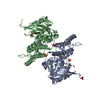
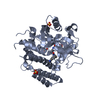
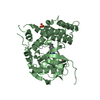
 Components
Components Homo sapiens (human) / Gene: PARP1, ADPRT, PPOL / Production host:
Homo sapiens (human) / Gene: PARP1, ADPRT, PPOL / Production host: 
 X-RAY DIFFRACTION / Number of used crystals: 1
X-RAY DIFFRACTION / Number of used crystals: 1  Sample preparation
Sample preparation SYNCHROTRON / Site:
SYNCHROTRON / Site:  BESSY
BESSY  / Beamline: 14.1 / Wavelength: 0.91841 Å
/ Beamline: 14.1 / Wavelength: 0.91841 Å Processing
Processing MOLECULAR REPLACEMENT
MOLECULAR REPLACEMENT Movie
Movie Controller
Controller


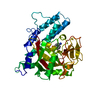

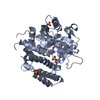

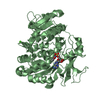
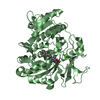
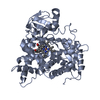
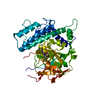
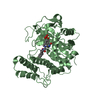
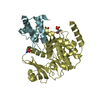
 PDBj
PDBj










